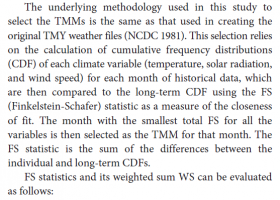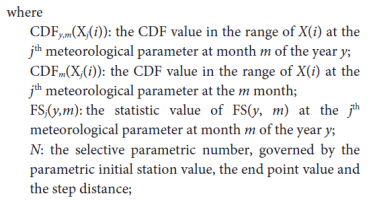Hello, I am struggling to understand the formula (see image below). The formula is called the Finkelstein-Schafer statistic. I have hourly weather data from several meteorological parameters spanning 20 years.
For example, I want the FS from the meteorological parameter 'temperature' for the month January 2010. So for the CDFy,m(X(i)), I order the temperature values from January 2010 in ascending order and calculate for each temperature value the CDF value. So I have 31 CDF's values.
After that, I do not get further. I understand that the CDFm(X,(i)) only looks at the specific month, but not the year. So I order all January values from the 20 years and calculate the CDFs values for each temperature value. When I do that I have 620 Values (31*20 years). How shall I perform the subtraction afterward? The number of CDFm values and CDFy,m values are not equal. I am sure I misunderstand the formula...? I am grateful for any help!



For example, I want the FS from the meteorological parameter 'temperature' for the month January 2010. So for the CDFy,m(X(i)), I order the temperature values from January 2010 in ascending order and calculate for each temperature value the CDF value. So I have 31 CDF's values.
After that, I do not get further. I understand that the CDFm(X,(i)) only looks at the specific month, but not the year. So I order all January values from the 20 years and calculate the CDFs values for each temperature value. When I do that I have 620 Values (31*20 years). How shall I perform the subtraction afterward? The number of CDFm values and CDFy,m values are not equal. I am sure I misunderstand the formula...? I am grateful for any help!



Last edited by a moderator:
